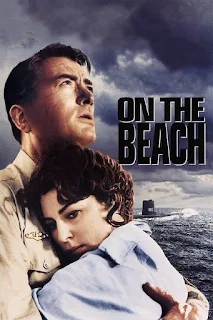First, a public service announcement: if you don't stay home, wear the damn mask.
The future as we conceive of it is normally this vast time ahead, centuries or even eons, or at least generations or decades.
The climate crisis that threatens the decades and centuries ahead, contracts that expanse. Now we in the US at this moment are looking at an even more foreshortened future.
For the unknown future of consequence is first and foremost the next 5 to 7 months. And the question of how well and even if (as the same nation) we survive to the November election and past it, and somehow to Inauguration Day in late January takes up just about all the speculative space there is.
There are lots of individual questions, the answers to which will shape that future. Politically, the outcome of November becomes more and more likely, which is a Democratic landslide. At this point it seems that not even the Republican effort to suppress votes will stop it. They did their best with a scandalous and deliberate chaos in Georgia, and the nearly final results just announced show that Democrats tripled their number of votes in a primary.
Meanwhile the current administration is doing everything in its power to motivate every voting group likely to vote for Democrats to vote for their own survival in record numbers. The administration is also making life much harder for most of the people that vote Republican.
There are still the AlwaysTrumpers, the reliable one-third, but it's not clear how reliable they are anymore. We will see if they are really insane enough to crowd into covid pits to shout and spit in Tulsa, where infections are rising fast, or even in Jacksonville. What if the tickets aren't actually going like hotcakes in Tulsa, and what if Trump suddenly realizes that for an hour or more he'll be facing thousands of possibly infected people screaming at him?
It seems that all that needs to happen for this electoral change is for Joe Biden to stay healthy, and the country to be intact enough to have a good enough election. And Biden's health aside, that second condition is the real question.
Because with infections and hospitalizations rising in a growing number of places, and with the realization that the federal government is failing even more profoundly that it did a few months ago, and has never, ever organized and produced and delivered the proper equipment to medical facilities, and has never done what was necessary to make the nursing homes safe that it regulates and oversees, we are in grave danger.
Epidemics move fast, with rapid consequences. A huge national tragedy well beyond what we've seen so far was averted this spring because the major outbreaks began in states with strong governors who recognized what had to be done, and led the shutdowns and the organization of the public health systems in their states. But the outbreaks so far this summer are largely in states without that kind of governor.
Now even those stalwart governors are under systematic attack by Republicans, mobilizing the anger of the panicked and thoughtless. Armed thugs outside her home shouting anti-Jewish slurs led the heroic health secretary of Ohio to resign.
Republicans are engaged in a war on reality, and we cannot afford to let them win. The virus does not care that you are sick of it, that it's had its social media moment. It may not be viral in cyberspace, but it's still viral in real space.
Disease does not respect wishes or psychological needs, convenience or expectations or rhetoric or spin, and what may come into focus is that it does not respect state borders. There are resulting scenarios that could threaten to disunite these United States this fall.
This is a big country with lots of moving parts, and we have a lot of excess in the economy. So there are no predictions, other than the assumption that everything holds together somehow isn't the only possible scenario. There is reasonable doubt about this foreshortened future.
Because it is now possible--if not likely--that the US will have officially registered close to a quarter million deaths from covid by the end of the year, perhaps by election day. By then, the national economy could be worse, maybe much worse that it is now, and the consequences growing. And so that patch of future is blank. That's what this week told me.
Pioneers of the Heart: Altruism and the Big Question
-
From some 3000 miles away, one of the attractions of Humboldt State
University and the North Coast of California in the late 1990s was
something called the...
2 days ago















































